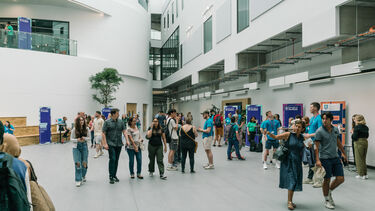Structure of photosynthetic complexes
We use electron cryo-microscopy to study the there-dimeniosnla structure and function of photosynthetic complexes

Photosynthesis, the source of energy for most of life on Earth, spans a wide range of time and length scales in its fundamental processes. The initial events of light absorption and energy transfer between neighbouring (~1 nm separation) pigments (bacteriochlorophylls (BChls), chlorophylls (Chls), carotenoids (crts)) within a light-harvesting complex (LHC) occur on a femtosecond timescale. Excitation energy migrates between LHCs in membranes over distances of 10-200 nm and tens of picoseconds later it arrives at a specialised complex, the reaction centre, initiating a picosecond charge separation. Milliseconds later the doubly reduced quinol acceptor leaves the RC and diffuses a few nm in the membrane to the cytochrome bc1/ b6f complex. Subsequent generation of a proton-motive force across the photosynthetic membrane, and the eventual storage of this energy in a chemical form as ATP (ATP synthase) take tens of ms.
Stored solar energy in the form of a protonmotive force and ATP fuel cellular metabolism, and ultimately the proliferation of new membranes and cells on a timescale of hours.
Using Cryo-EM we study the structure and function of these photosynthetic machines.

Experience Sheffield for yourself
The best way to find out what studying at Sheffield is like is to visit us. You'll get a feel for the atmosphere, the people, the campus and the city.
